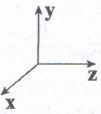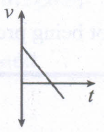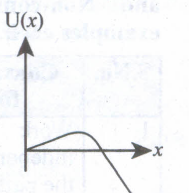- State Board
-
12th Standard
-

Biology
-

Computer Applications
-

Computer Science
-

Business Maths and Statistics
-

Commerce
-

Economics
-

Maths
-

Chemistry
-

Physics
-

Computer Technology
-

History
-

Accountancy
-

Tamil
-

Maths
-

Chemistry
-

Physics
-

Biology
-

Computer Science
-

Business Maths and Statistics
-

Economics
-

Commerce
-

Accountancy
-

History
-

Computer Applications
-

Computer Technology
-

English
12th Standard stateboard question papers & Study material
தமிழ் Subjects
English Subjects
-
-
11th Standard
-

Maths
-

Biology
-

உயிரியல் - தாவரவியல்
-

Economics
-

Physics
-

Chemistry
-

History
-

Business Maths and Statistics
-

Computer Science
-

Accountancy
-

Commerce
-

Computer Applications
-

Computer Technology
-

Tamil
-

Maths
-

Commerce
-

Economics
-

Biology
-

Business Maths and Statistics
-

Accountancy
-

Computer Science
-

Physics
-

Chemistry
-

Computer Applications
-

History
-

Computer Technology
-

Tamil
-

English
11th Standard stateboard question papers & Study material
தமிழ் Subjects
English Subjects
-
-
9th Standard
-

-

-

-

-

-

-

Maths
-

Science
-

Social Science
-

Maths
-

Science
-

Social Science
9th Standard stateboard question papers & Study material
தமிழ் Subjects
English Subjects
-
-
6th Standard
-

Maths
-

Science
-

Social Science
-

Maths
-

Science
-

Social Science
6th Standard stateboard question papers & Study material
தமிழ் Subjects
English Subjects
-
-
10th Standard
-

Maths
-

Science
-

Social Science
-

Tamil
-

Maths
-

Science
-

Social Science
-

English
-

English
10th Standard stateboard question papers & Study material
தமிழ் Subjects
English Subjects
-
-
7th Standard
-

Maths
-

Science
-

Maths
-

Science
-

Social Science
7th Standard stateboard question papers & Study material
தமிழ் Subjects
English Subjects
-
-
8th Standard
-

கணிதம் - old
-

Science
-

Social Science
-

கணிதம்
-

Maths
-

Science
-

Social Science
8th Standard stateboard question papers & Study material
தமிழ் Subjects
English Subjects
-
-
12th Standard
- CBSE Board
-
12th Standard CBSE
-

Biology
-

Chemistry
-

Physics
-

Maths
-

Accountancy
-

Business Studies
-

Economics
-

Introductory Micro and Macroeconomics
-

Computer Science
-

Geography
-

English
-

History
-

Indian Society
-

Physical Education
-

Sociology
-

Political Science
-

Engineering Graphics
-

Bio Technology
-

Entrepreneurship
-

Hindi Elective
-

Home Science
-

Legal Studies
-

Psychology
-

Hindi Core
-

Tamil
12th Standard CBSE Subject Question Paper & Study Material
-
-
11th Standard CBSE
-

Physics
-

Mathematics
-

Chemistry
-

Biology
-

Economics
-

Business Studies
-

Accountancy
-

Computer Science
-

English
-

Geography
-

History
-

Physical Education
-

Psychology
-

Sociology
-

Bio Technology
-

Enterprenership
-

Hindi
-

Home Science
-

Political Science
-

Applied Mathematics
11th Standard CBSE Subject Question Paper & Study Material
-
- 10th Standard CBSE
-
9th Standard CBSE
-

Social Science
-

Mathematics
-

Science
-

English
-

Hindi
9th Standard CBSE Subject Question Paper & Study Material
-
-
8th Standard CBSE
-

Social Science
-

Science
-

Mathematics
-

English
8th Standard CBSE Subject Question Paper & Study Material
-
-
7th Standard CBSE
-

Social Science
-

Science
-

Mathematics
-

English
7th Standard CBSE Subject Question Paper & Study Material
-
-
6th Standard CBSE
-

Social Science
-

Science
-

Mathematics
-

English
6th Standard CBSE Subject Question Paper & Study Material
-
-
12th Standard CBSE
- Free Online Test
- News
- Study Materials
-
Students
-

Stateboard Tamil Nadu
-

CBSE Board
-

Free Online Tests
-

Educational News
-

Scholarships
-

Entrance Exams India
-

Video Materials
Study Materials , News and Scholarships
-
-
Students

11th Standard Physics English Medium - Important 1 Mark MCQ's Question Paper and Answer Key 2022 - 2023 Study Materials Dec-31 , 2022
QB365 provides a detailed and simple solution for every Possible Questions in Class 11 Physics Subject - Important 1 Mark MCQ's, English Medium. It will help Students to get more practice questions, Students can Practice these question papers in addition to score best marks.
11th Standard Physics Important 1 Mark Question with Answers
11th Standard
-
Reg.No. :
Physics
Time :
00:50:00 Hrs
Total Marks :
50
-
One of the combinations from the fundamental physical constants is \({{hc}\over{G}},\) The unit of this expression is
(a)Kg2
(b)m3
(c)S-1
(d)m
-
The dimensional formula for gravitational constant G is
(a)[ML3T-2]
(b)[M-1L3T-2]
(c)[M-1L-3T-2]
(d)[ML-3T2]
-
Which one of the following Cartesian coordinate systems is not followed in physics?
(a) (b)
(b) (c)
(c) (d)
(d)
-
A ball is projected vertically upwards with a velocity v. It comes back to ground in time t. Which v-t graph shows the motion correctly?
(a) (b)
(b) (c)
(c) (d)
(d)
-
An object is dropped in an unknown planet from height 50 m, it reaches the ground in 2 s. The acceleration due to gravity in this unknown planet is
(a)g = 20 ms-2
(b)g = 25 ms-2
(c)g = 15 ms-2
(d)g = 30 ms-2
-
A book is at rest on the table which exerts a normal force on the book. If this force is considered as reaction force, what is the action force according to Newton's third law?
(a)Gravitational force exerted by Earth on the book
(b)Gravitational force exerted by the book on Earth
(c)Normal force exerted by the book on the table
(d)None of the above
-
An object of mass m begins to move on the plane inclined at an angle θ. The coefficient of static friction of inclined surface is μs. The maximum static friction experienced by the mass is
(a)mg
(b)μs mg
(c)μs mg sin ፀ
(d)μs mg cos ፀ
-
If the potential energy of the particle is \(\alpha -\frac { \beta }{ 2 } { x }^{ 2 }\), then force experienced by the particle is
(a)F = \(\frac { \beta }{ 2 } { x }^{ 2 }\)
(b)F = βx
(c)F = -βx
(d)F = -\(\frac { \beta }{ 2 } { x }^{ 2 }\)
-
A particle which is constrained to move along x-axis, is subjected to a force in the same direction which varies with the distance x of the particle from the origin as F(x) = kx + ax3. Here, k and a are positive constants. For x ≥ 0, the functional form of the potential, energy U(x) of the particles
(a) (b)
(b) (c)
(c) (d)
(d)
-
A couple produces,
(a)pure rotation
(b)pure translation
(c)rotation and translation
(d)no motion
-
From a disc of radius R a mass M, a circular hole of diameter R, whose rim passes through the center is cut. What is the moment of inertia of the remaining part of the disc about a perpendicular axis passing through it
(a)15MR2/32
(b)13MR2/32
(c)11MR2/32
(d)9MR2/32
-
The linear momentum and position vector of the planet is perpendicular to each other at
(a)perihelion and aphelion
(b)at all points
(c)only at perihelion
(d)no point
-
The gravitational potential energy of the Moon with respect to Earth is
(a)always positive
(b)always negative
(c)can be positive or negative
(d)always zero
-
If the acceleration due to gravity becomes 4 times its original value, then escape speed
(a)remains same
(b)2 times of original value
(c)becomes halved
(d)4 times of original value
-
In hot summer after a bath, the body’s
(a)internal energy decreases
(b)internal energy increases
(c)heat decreases
(d)no change in internal energy and heat
-
A hot cup of coffee is kept on the table. After some time it attains a thermal equilibrium with the surroundings. By considering the air molecules in the room as a thermodynamic system, which of the following is true
(a)ΔU > 0, Q = 0
(b)ΔU > 0, W < 0
(c)ΔU > 0, Q > 0
(d)ΔU = 0, Q > 0
-
An ideal gas is maintained at constant pressure. If the temperature of an ideal gas increases from 100K to 1000K then the rms speed of the gas molecules
(a)increases by 5 times
(b)increases by 10 times
(c)remains same
(d)increases by 7 times
-
The length of a second’s pendulum on the surface of the Earth is 0.9 m. The length of the same pendulum on surface of planet X such that the acceleration of the planet X is n times greater than the Earth is
(a)0.9n
(b)\(\frac{0.9}{n}\)m
(c)0.9n2m
(d)\(\frac{0.9}{n^2}\)
-
A simple pendulum has a time period T1. When its point of suspension is moved vertically upwards according as y = k t2, where y is vertical distance covered and k = 1 ms−2, its time period becomes T2. Then, \(\frac { { T }_{ 1 }^{ 2 } }{ { T }_{ 2 }^{ 2 } } \) is (g = 10 m s−2).
(a)\(\frac{5}{6}\)
(b)\(\frac{11}{10}\)
(c)\(\frac{6}{5}\)
(d)\(\frac{5}{4}\)
-
A transverse wave moves from a medium A to a medium B. In medium A, the velocity of the transverse wave is 500 ms-1 and the wavelength is 5 m. The frequency and the wavelength of the wave in medium B when its velocity is 600 ms-1, respectively are
(a)120 Hz and 5 m
(b)100 Hz and 5 m
(c)120 Hz and 6 m
(d)100 Hz and 6 m
-
A person standing between two parallel hills fires a gun and hears the first echo after t1 sec and the second echo after t2 sec. The distance between the two hills is
(a)\(\frac { v({ t }_{ 1 }-{ t }_{ 2 }) }{ 2 } \)
(b)\(\frac { v\left( { t }_{ 1 }{ t }_{ 2 } \right) }{ 2({ t }_{ 1 }+{ t }_{ 2 }) } \)
(c)v (t1 + t2)
(d)\(\frac { v({ t }_{ 1 }+{ t }_{ 2 }) }{ 2 } \)
-
Astromical Scale is dealt with the _________ Physics
(a)Mesoscopic
(b)Microscopic
(c)Macroscopic
(d)None
-
Match the following fundamental forces with respect to relative strengths.
(1) Gravitational force (a) 1 (2) Electromagnetic force (b) 10-39 (3) Weak nuclear force (c) 10-2 (4) Strong nuclear force (d) 10-13 (a)(1) (2) (3) (4) a d b c (b)(1) (2) (3) (4) b c d a (c)(1) (2) (3) (4) c d a b (d)(1) (2) (3) (4) c a b d -
How many AU makes one metre?
(a)3.26 \(\times\) 1011AU
(b)1.496 \(\times\) 1011AU
(c)3.08 \(\times\) 1016 AU
(d)6.684 \(\times\) 10-12AU
-
The fractional error \(\left( {{\triangle x}\over{x}} \right)\) _____________.
(a)\(\pm\left( {{\triangle x}\over{x}} \right)\)
(b)\(\pm n\left( {{\triangle a}\over{a}}\right)\)
(c)\(\pm n \log_e \left( {{\triangle a}\over{a}}\right)\)
(d)\(\pm n \log_{10}{{\triangle a}\over{a}}\)
-
The fraction of \(1\over 273.16\) temperature of the triple point of water represents __________.
(a)celsius
(b)fahrenheit
(c)centigrade
(d)kelvin
-
If force acts on a body, whose line of action does not pass through its CG, then the body will experience ______________
(a)angular acceleration
(b)lineal acceleration
(c)both (a) and (b)
(d)none
-
Which of the following has largest M.I _________________.
(a)Ring about its axis perpendicular to its plane
(b)Disc about its axis perpendicular to its plane
(c)Solid sphere
(d)Bar magnet
-
If a person standing on a rotating disc stretches out his hands the angular speed will ____________.
(a)Increase
(b)Decrease
(c)Remain same
(d)None
-
Centre of mass of the earth and the moon system lies ____________.
(a)Closer to the earth
(b)Closer to the moon
(c)at the mid-point of line joining the earth and the moon
(d)cannot be predicted
-
The centre of mass of a system of particles does not depend on ______________.
(a)position of the particles
(b)relative distance between the particles
(c)masses of the particles
(d)forces acting on the particles
-
Moment of inertia of a solid cylinder having radius R0 is ______________.
(a)\(MR_{0}^{2}\)
(b)\(MR_{0}^{{2\over3}}\)
(c)\(MR_{0}^{{2\over4}}\)
(d)\(MR_{0}^{{2\over 2}}\)
-
A sphere rolls on a horizontal plane without slipping. The percentage of kinetic energy which is rotational is ______________.
(a)57%
(b)28.05%
(c)14.28%
(d)58.5%
-
A fly wheel rotating about fixed axis has a kinetic energy of 360 joule when its angular speed is 30 radian/sec, The moment of inertia of the wheel about the ax is of rotation is _____________.
(a)0.6 kgm2
(b)0.15 kgm2
(c)0.8 kgm2
(d)0.75 kgm2
-
If more air is pushed in a soap bubble, the pressure in it will _______________.
(a)decreases
(b)increases
(c)remains same
(d)becomes zero
-
A satellite which is geostationary in a particular orbit is taken to another orbit. Its distance from the center of earth in new orbit is two times of the earlier orbit. The time period in second orbit is ________ hours.
(a)4.8
(b)48\(\sqrt{2}\)
(c)24
(d)24\(\sqrt{2}\)
-
Orbital velocity of an artificial satellite does not depend upon ________.
(a)mass of Earth
(b)mass of satellite
(c)radius of Earth
(d)acceleration doe to gravity
-
The diameters of two planets are in the ratio of 4 : 1. Their mean densities are in the ratio 1 : 2. The ratio of accelerations due, to gravity on the planet is
(a)2:1
(b)1:2
(c)4:1
(d)1:4
-
The potential energy possessed by a, drop bubble, having surface tension equal to 0.04 Nm-1 of diameter 1 cm is
(a)8\(\pi\)\(\times\)10-6J
(b)2\(\pi\)\(\times\)10-6J
(c)4\(\pi\)\(\times\)10-6J
(d)16\(\pi\)\(\times\)10-6J
-
Universal gas constant is _________________.
(a)Cp/Cv
(b)Cp - Cv
(c)Cp + Cv
(d)Cv/Cp
-
The mass of 1 litre of helium under a pressure of 2 atm and at a temperature of 27°C is _______________.
(a)0.16 g
(b)0.32 g
(c)0.48 g
(d)0.64 g
-
A closed bottle containing water at room temperature is taken to the moon and then the lid is opened. The water will______.
(a)freeze
(b)boil
(c)decompose into hydrogen and oxygen
(d)not change at all.
-
The ratio of energy of radiation emitted by a black body at 27oC to 927oC is
(a)1:4
(b)1:16
(c)1:64
(d)1:256
-
Which of the following statement/statements are correct?
(i) Pressure of the gas molecules increases with increases of number density.
(ii) Pressure decreases with increases of mean square speed of the gas molecules.
(iii) Larger mass of the molecule will have larger momentum for fixed speed.(a)i) ii)
(b)ii) iii)
(c)i) iii)
(d)all are correct
-
The ratio between the rms speed and most probable speed of gas molecules at a given temperature is
(a)\(\begin{equation} 2 \sqrt{2}: \sqrt{1} \end{equation}\)
(b)\(\begin{equation} \sqrt{3}: \sqrt{2} \end{equation}\)
(c)\(\begin{equation} \sqrt{2}: \sqrt{3} \end{equation}\)
(d)\(\begin{equation} \sqrt{1}: 2 \sqrt{2} \end{equation}\)
-
A transverse wave propagating on a stretched string of linear density 3\(\times\)10-4 kg m-1 is represented by the equation. y = 0.2 sin (1.5x + 60t)
Where x is in metres and t is in seconds. The tension in the string (in newtons) is _______________.(a)0.48
(b)0.24
(c)0.20
(d)1.80
-
Beats occur because of ____________.
(a)interference
(b)reflection
(c)refraction
(d)Doppler effect
-
An air column in a pipe, which is closed at one end, will be in resonance with a vibrating tuning fork of frequency 256 Hz, if the length of the column in centimeter is ____________ (velocity of sound in air = 340 m/s)
(a)21.25
(b)125
(c)62.50
(d)33.2
-
Two vibrating tuning forks produce waves given by Y1 = 2 sin 400 \(\pi t\) and y2 = 2 sin 406\(\pi t\) The number of beats produced per second is ____________
(a)6
(b)3
(c)1.5
(d)12
-
If the equation of the wave is represented by \(\mathbf{y}=10^{-2} \sin \left(500 t-\frac{x}{20}\right) \mathbf{m}\)then the velocity of the wave is_______m/s.
(a)10,000
(b)500
(c)50
(d)1000
Answer All The Questions
50 x 1 = 50
*****************************************
Answers
-
(a)
Kg2
-
(b)
[M-1L3T-2]
-
(d)

-
(c)

-
(b)
g = 25 ms-2
-
(c)
Normal force exerted by the book on the table
-
(d)
μs mg cos ፀ
-
(b)
F = βx
-
(d)

-
(a)
pure rotation
-
(b)
13MR2/32
-
(a)
perihelion and aphelion
-
(b)
always negative
-
(b)
2 times of original value
-
(a)
internal energy decreases
-
(c)
ΔU > 0, Q > 0
-
(b)
increases by 10 times
-
(a)
0.9n
-
(c)
\(\frac{6}{5}\)
-
(d)
100 Hz and 6 m
-
(d)
\(\frac { v({ t }_{ 1 }+{ t }_{ 2 }) }{ 2 } \)
-
(c)
Macroscopic
-
(b)
(1) (2) (3) (4) b c d a -
(d)
6.684 \(\times\) 10-12AU
-
(b)
\(\pm n\left( {{\triangle a}\over{a}}\right)\)
-
(d)
kelvin
-
(c)
both (a) and (b)
-
(a)
Ring about its axis perpendicular to its plane
-
(b)
Decrease
-
(c)
at the mid-point of line joining the earth and the moon
-
(d)
forces acting on the particles
-
(d)
\(MR_{0}^{{2\over 2}}\)
-
(b)
28.05%
-
(c)
0.8 kgm2
-
(a)
decreases
-
(b)
48\(\sqrt{2}\)
-
(a)
mass of Earth
-
(a)
2:1
-
(a)
8\(\pi\)\(\times\)10-6J
-
(b)
Cp - Cv
-
(b)
0.32 g
-
(b)
boil
-
(a)
1:4
-
(a)
i) ii)
-
(b)
\(\begin{equation} \sqrt{3}: \sqrt{2} \end{equation}\)
-
(a)
0.48
-
(a)
interference
-
(d)
33.2
-
(b)
3
-
(d)
1000






 11th Standard Physics Syllabus
11th Standard Physics Syllabus  11th Standard Physics Study Materials
11th Standard Physics Study Materials 11th Standard Physics MCQ Practise Tests
11th Standard Physics MCQ Practise Tests 

Reviews & Comments about 11th Standard Physics English Medium - Important 1 Mark MCQ's Question Paper and Answer Key 2022 - 2023
Write your Comment